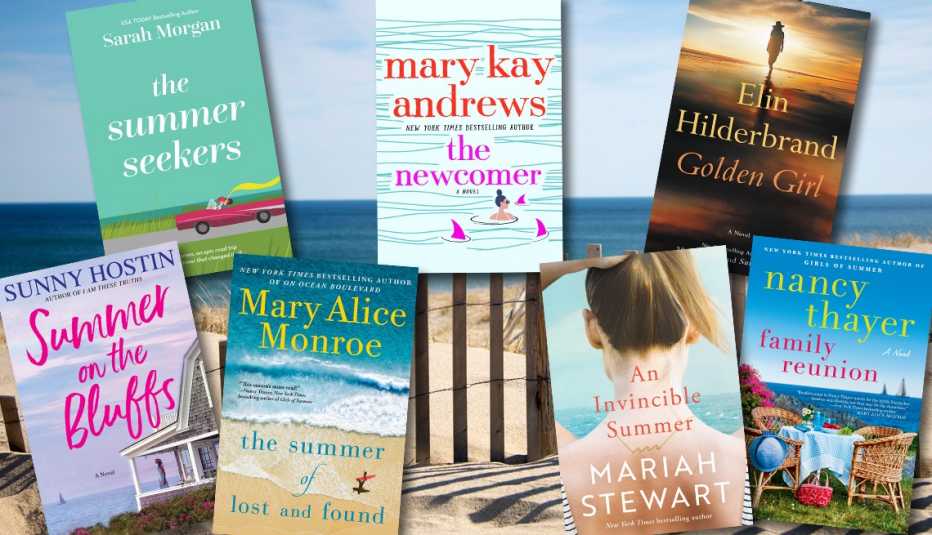Staying Fit


Ready for a fresh batch of beach books? And what are beach books? Many would define them as stories that are, of course, mostly set by the beach, but they also often include a charming family summer home, a touch of romance and a happy ending. Here are seven to pack in your beach bag.
Golden Girl by Elin Hilderbrand
Hilderbrand's new Nantucket-set novel is already at the top of the best-seller list, and for good reason: It may be one of her best. Famous beach-book writer (ha) Vivi Howe is killed in a hit-and-run while out jogging, causing chaos among her three grown children and friends, who want to understand what happened. Meanwhile, Vivi has gone to “the Beyond,” where she's told by an Hermès scarf-wearing character named Martha that she holds three “nudges” to affect life on earth. While deciding how to use those nudges, Vivi watches her loved ones with concern as they go through their summer days — until an unexpected stranger threatens everyone's peace.


AARP Membership— $12 for your first year when you sign up for Automatic Renewal
Get instant access to members-only products and hundreds of discounts, a free second membership, and a subscription to AARP the Magazine.
Summer on the Bluffs by Sunny Hostin
This debut novel by The View cohost Sunny Hostin is set on Martha's Vineyard (what is it about Massachusetts’ islands?) during one seminal summer. Afro Latina lawyer Perry Soto is visiting her godmother Ama's stunning ocean-side home, Chateau Laveau, in Oak Bluffs, the island's real-life affluent Black beach community known for its beautiful Victorian-era houses. When Ama announces she's giving up the house to either Perry or one of her fellow godchildren Olivia and Billie (she'll tell them whom at the end of the summer) to go live with her lover in France, Perry is stunned. They all desperately want it — but can the secrets they each harbor derail their chances of inheriting it?

































































More on entertainment
5 Action-Packed New Nonfiction Books for Summer
Escape with these true stories about daring feats and wild adventuresTravel Experts Recommend Their Favorite Armchair Book Escapes
8 great reads make for juicy imagined journeys
AARP Bookstore
Find e-books, print books and free downloads on health, food, technology and more